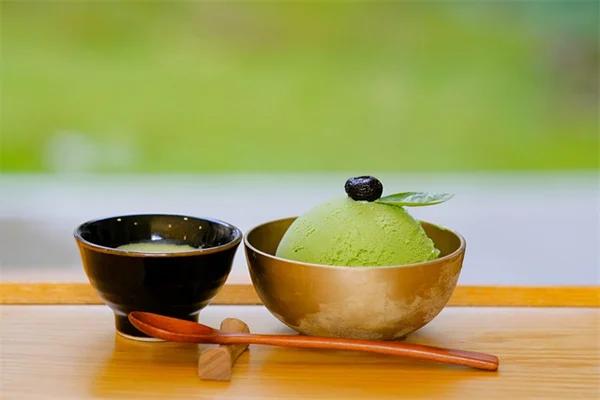Advertisement
Can just 20 minutes of daily exercise really keep you out of the hospital? The answer is a resounding yes! According to groundbreaking new research published in JAMA Network Open, short bursts of physical activity can significantly reduce your risk of hospitalization for common health conditions. I was amazed to discover that moving for just 20 minutes daily - that's less time than it takes to watch your favorite sitcom - can slash diabetes-related hospitalizations by 23%!We've all heard exercise is good for us, but this study of over 81,000 people reveals exactly how powerful small doses can be. Whether it's walking your dog, dancing in your living room, or taking the stairs at work, these simple activities boost your immune system, improve heart health, and even help prevent conditions like anemia and gallbladder disease. The best part? You don't need expensive equipment or hours at the gym - just consistent movement that fits into your daily routine.
E.g. :10% Weight Loss Secrets: How Lifestyle Changes & Meds Work Together
- 1、Exercise: Your Daily Dose of Health Protection
- 2、Why Your Body Loves Movement
- 3、Making Exercise Work for You
- 4、Breaking Down the Benefits
- 5、Overcoming Common Excuses
- 6、Your Personal Exercise Prescription
- 7、The Social Side of Staying Active
- 8、Seasonal Movement Strategies
- 9、Mind-Body Connections
- 10、Workplace Wellness Wins
- 11、Budget-Friendly Fitness
- 12、Lifelong Activity Blueprint
- 13、FAQs
Exercise: Your Daily Dose of Health Protection
The Power of Short Workouts
Guess what? You don't need to spend hours at the gym to stay healthy! Recent studies show that just 11-20 minutes of daily exercise can work wonders for your body. I'm talking about simple activities like walking your dog, dancing to your favorite song, or even chasing your kids around the park.
Researchers looked at data from over 81,000 people (that's like filling a football stadium!) and found something amazing. Those who moved for just 20 minutes daily had 23% lower risk of diabetes-related hospitalizations. That's better odds than guessing the correct answer on a multiple-choice test!
What Counts as Exercise?
Here's the best part - exercise doesn't mean boring treadmill sessions. Check out these fun options:
| Activity | Calories Burned (150lb person) | Health Benefits |
|---|---|---|
| Brisk Walking | 100-150 | Heart health, mood boost |
| Dancing | 150-200 | Coordination, stress relief |
| Gardening | 120-160 | Strength, vitamin D |
Did you know that walking your dog for 15 minutes counts as exercise? Your furry friend just became your personal trainer! The key is finding activities you enjoy - you're much more likely to stick with them.
Why Your Body Loves Movement
 Photos provided by pixabay
Photos provided by pixabay
The Science Behind the Magic
Ever wonder why exercise makes you feel so good? It's like giving your body a tune-up! Physical activity:
- Boosts your immune system (fewer sick days!)
- Improves insulin sensitivity (bye-bye sugar crashes)
- Strengthens heart and lungs (more energy for fun)
Here's a cool fact: Exercise works like natural medicine. It reduces inflammation - that's your body's alarm system - and helps prevent conditions from diabetes to pneumonia. Think of it as your internal cleaning crew, working overtime to keep you healthy.
But Wait - There's More!
Can exercise really help you live longer? You bet! A 2020 study found that people taking 8,000+ steps daily had significantly lower mortality risk. That's like adding extra years to your life just by walking to the mailbox instead of driving!
And get this - exercise even helps you sleep better and manage stress. It's nature's chill pill! When you're active, your body releases happy chemicals called endorphins. No prescription needed, just some good old-fashioned movement.
Making Exercise Work for You
Start Small, Win Big
Don't have time for long workouts? No problem! Short bursts count too. Here's my favorite approach:
- Begin with 10-15 minute walks, 2-3 days weekly
- Gradually increase time and intensity
- Mix in activities you enjoy
Remember my neighbor Bob? He started by walking to get his morning coffee instead of driving. Now he's doing 5K races! The secret? He found what worked for his lifestyle.
 Photos provided by pixabay
Photos provided by pixabay
The Science Behind the Magic
Is exercise boring? Not if you make it fun! Try these ideas:
- Dance while cooking dinner
- Take walking meetings at work
- Play active video games
- Park farther from store entrances
I once saw a guy doing squats while brushing his teeth. Now that's multitasking! The point is - movement adds up throughout your day. You don't need special equipment or expensive gym memberships.
Breaking Down the Benefits
Disease Prevention Powerhouse
How much difference can 20 minutes really make? Let's look at the numbers:
| Condition | Risk Reduction |
|---|---|
| Diabetes | 23% lower hospitalization risk |
| Colon Polyps | 3.8% lower risk |
| Heart Disease | Significant protection |
That daily walk could literally save your life. And the best part? These benefits start kicking in almost immediately. Your body begins repairing and strengthening itself from the very first workout.
Mental Health Bonus
Did you know exercise is great for your brain too? Physical activity:
- Reduces anxiety and depression
- Improves memory and focus
- Boosts creativity and problem-solving
Next time you're stuck on a problem, try taking a walk. Many famous thinkers - from Einstein to Jobs - swore by walking to spark ideas. Your brain works better when your body moves!
Overcoming Common Excuses
 Photos provided by pixabay
Photos provided by pixabay
The Science Behind the Magic
Think you're too busy? Here's a reality check: we all have the same 24 hours. The trick is making movement part of your routine. Try these time-savers:
- Walk during phone calls
- Do calf raises while washing dishes
- Take the stairs whenever possible
Remember - 11 minutes is all it takes to start seeing benefits. That's less time than you probably spend scrolling social media! Could you find 11 minutes today? Of course you could - we're talking about the length of two commercial breaks.
"Exercise is Hard" Myth Buster
Does exercise have to be painful? Absolutely not! The key is finding your "just right" challenge - not too easy, not too hard. Start where you are, not where you think you should be.
My friend Sarah thought she hated exercise until she discovered swimming. Now she looks forward to her pool time! The water supports her body while giving great resistance. Moral of the story? There's an activity out there you'll enjoy - you just haven't found it yet.
Your Personal Exercise Prescription
Finding Your Perfect Routine
Ready to start? Here's a simple formula:
- Choose activities you enjoy
- Start with small, achievable goals
- Gradually increase duration and intensity
- Mix cardio, strength and flexibility
Don't overcomplicate it. Remember - consistency beats intensity. Five 20-minute walks per week are better than one two-hour marathon session you dread. Your future self will thank you!
Tracking Your Progress
Want extra motivation? Try tracking your activity. You can use:
- Simple pedometer (5,000 steps daily goal)
- Smartphone fitness apps
- Old-school calendar checkmarks
Seeing your progress visually can be incredibly motivating. I once coached someone who marked each workout on her wall calendar with a gold star - like being back in kindergarten! By year's end, she had a galaxy of stars and significantly better health.
The Social Side of Staying Active
Exercise as Community Builder
Who says getting healthy has to be a solo mission? Some of my best friendships started at the gym or running trails. Group activities create natural bonding opportunities while keeping you accountable. Think about it - you're much less likely to skip that morning walk when your neighbor is waiting outside!
Local communities offer countless ways to connect through movement. From weekend hiking clubs to pickleball tournaments at the park, these social workouts kill two birds with one stone. You get your heart pumping while expanding your social circle. My cousin met her entire book club through a Zumba class - now they discuss novels while stretching after workouts!
Family Fitness Adventures
Why not make exercise a family affair? Active kids become active adults, and you're setting lifelong healthy habits. Try these ideas:
| Activity | Age Range | Bonus Benefits |
|---|---|---|
| Nature scavenger hunts | 3-10 years | Learning + movement |
| Backyard Olympics | 6-14 years | Friendly competition |
| Family bike rides | All ages | Exploring new areas |
Last summer, we turned our weekly grocery trip into a walking adventure. The kids tracked our steps and we'd stop at the park on the way home. By fall, we'd logged over 100 miles together - and saved on gas money too!
Seasonal Movement Strategies
Beating the Weather Blues
Ever notice how motivation dips when it's freezing or sweltering outside? Here's the good news: every season offers unique movement opportunities. Winter becomes perfect for indoor swimming or mall walking, while summer invites early morning hikes before the heat kicks in.
Can't stand the treadmill? I feel you! That's why I created "weather-proof" workout options. When it rains, I do living room dance parties with YouTube tutorials. Snowy days mean building snowmen counts as strength training (those snowballs are heavy!). The key is reframing weather challenges as creative opportunities.
Holiday Activity Hacks
Why do we always associate holidays with sitting around? Let's flip that script! Thanksgiving could include a family turkey trot 5K. Christmas morning might start with presents, then shift to sledding races. Even Halloween offers chances to walk neighborhoods instead of driving between houses.
At our Fourth of July BBQ last year, we organized a watermelon relay race (careful with the slippery hands!). The kids loved it, adults got moving, and we created new traditions. Holiday calories taste better when you've earned them through fun activity first!
Mind-Body Connections
Movement as Meditation
Ever tried "walking meditation"? It's like giving your brain a spa day while your body works. The rhythmic motion of walking creates perfect conditions for mental clarity. I often solve my trickiest work problems during lunchtime strolls - no desk required!
Yoga teachers have known this secret for centuries. Flowing through poses connects breath with movement, creating moving mindfulness. You don't need fancy equipment - just focus on how your body feels during simple stretches. That moment when you finally touch your toes? Pure bliss!
The Confidence Boost
Notice how standing tall instantly makes you feel more capable? Physical activity builds mental strength too. Each small victory - walking farther, lifting heavier, lasting longer - deposits confidence in your personal bank account.
My friend Maria's story says it all. After knee surgery, she started with five-minute walks to her mailbox. Six months later, she completed a charity walk. That glow of accomplishment? Priceless. Every active minute makes you stronger inside and out.
Workplace Wellness Wins
Deskercise Revolution
Think office jobs doom you to inactivity? Think again! Sneaky movement breaks add up fast. Try calf raises while photocopying or seated leg lifts during long calls. I've even seen colleagues use stability balls instead of chairs - core workout while answering emails!
Forward-thinking companies now build movement into the workday. Walking meetings beat yawn-inducing conference rooms. Standing desks let you shift positions. One tech startup I visited has treadmill desks - employees walk while working. Genius!
The Productivity Paradox
Here's a workplace secret: active employees actually get more done. Short activity breaks:
- Increase focus and concentration
- Reduce afternoon energy slumps
- Spark creative problem-solving
Remember that big project deadline last quarter? Our team took five-minute dance breaks every hour. Not only did we meet our goal early, but we had way more fun doing it. Movement fuels productivity - science says so!
Budget-Friendly Fitness
No Gym? No Problem!
Who needs expensive equipment when your body provides the perfect resistance? Bodyweight exercises like push-ups, squats and planks deliver serious results without monthly fees. I trained for my first 5K using just neighborhood sidewalks and free online guides.
Public parks offer incredible free resources if you know where to look. That bench? Perfect for step-ups. Playground monkey bars? Great for pull-ups. Even stairs in apartment buildings become instant cardio machines. Get creative and the whole world becomes your gym!
Thrifty Gear Solutions
Can't afford fancy workout clothes? Raid your closet for:
- Comfortable sneakers (already broken in!)
- Stretchy pants or shorts
- Old t-shirts that breathe well
My first yoga mat was actually a beach towel on carpet. Worked perfectly! As for weights, water bottles or canned goods make excellent substitutes. The fitness industry wants you to think you need their products, but your health journey starts with what you've got.
Lifelong Activity Blueprint
Adapting Through Ages
Our movement needs change throughout life, and that's beautiful! Kids thrive on unstructured play, adults might prefer scheduled workouts, while seniors benefit from gentle tai chi or water aerobics. The constant? Keeping bodies in motion.
My 70-year-old aunt puts me to shame with her daily aqua fitness classes. Meanwhile, her teenage grandkids join for weekend swims. Three generations, one pool, endless health benefits. That's what I call a family legacy!
Movement as Self-Care
In our busy lives, exercise often gets treated as another chore. What if we reframed it as quality time with ourselves? Those morning walks become moving meditation. Evening stretches transform into gratitude practice for what our bodies can do.
Next time you're tempted to skip your workout, ask: Would I cancel coffee with my best friend? Probably not. Your health deserves the same priority. Schedule movement like any important appointment - because it is!
E.g. :Exercise: 7 benefits of regular physical activity - Mayo Clinic
FAQs
Q: How much exercise do I really need to see health benefits?
A: Here's the great news - you don't need to become a gym rat! The study found that just 11-20 minutes of moderate activity daily makes a significant difference. That's less time than most people spend scrolling social media! We're talking about simple activities like brisk walking, dancing, or even vigorous housecleaning. The key is consistency - doing something active most days. Even breaking it into two 10-minute sessions works. Remember, some movement is always better than none, and every minute counts toward better health.
Q: What types of health conditions can exercise help prevent?
A: You'll be amazed at how many conditions regular movement can help with! The research shows exercise reduces hospitalization risks for diabetes (by 23%), colon polyps (3.8%), pneumonia, UTIs, and even gallbladder disease. It's like a natural medicine cabinet! Physical activity boosts your immune system, improves circulation, and helps regulate blood sugar - all of which make your body more resilient. We're not just talking about serious diseases either - regular movers report fewer colds, better sleep, and less everyday aches and pains too.
Q: I hate exercising - are there fun ways to get my daily movement?
A: Absolutely! The best exercise is whatever you'll actually do consistently. We recommend thinking outside the gym: try gardening, playing with your kids or pets, dancing to your favorite songs, or even mall walking while window shopping. Many of our clients find "exercise snacking" helpful - short bursts like taking the stairs, parking farther away, or doing squats during TV commercials. The key is to make movement enjoyable rather than a chore. Remember, if you're breathing harder than normal and breaking a slight sweat, it counts!
Q: How quickly will I see benefits from starting to exercise?
A: Here's some motivating news - your body starts responding to exercise immediately! While major health protections build over time, you'll notice benefits like better sleep, improved mood, and more energy within days. The study shows measurable reductions in hospitalization risks start appearing with consistent movement over weeks. Think of it like a retirement account - every active minute you "deposit" now pays health dividends later. Even people who start small (say, 10-minute walks) see progressive improvements as they gradually increase activity.
Q: I have a busy schedule - how can I fit in exercise?
A: As a time-crunched professional myself, I totally get this concern! The beauty of this research is it shows short, accumulated activity works. Try these real-world tips: walk during phone calls, do calf raises while brushing teeth, take the long way to the restroom at work, or have walking meetings. Many successful people swear by "exercise multitasking" - listening to podcasts while walking or doing bodyweight exercises during TV time. Remember, three 10-minute sessions equal one 30-minute workout, and the health benefits are similar. It's all about finding pockets of time you can move!







